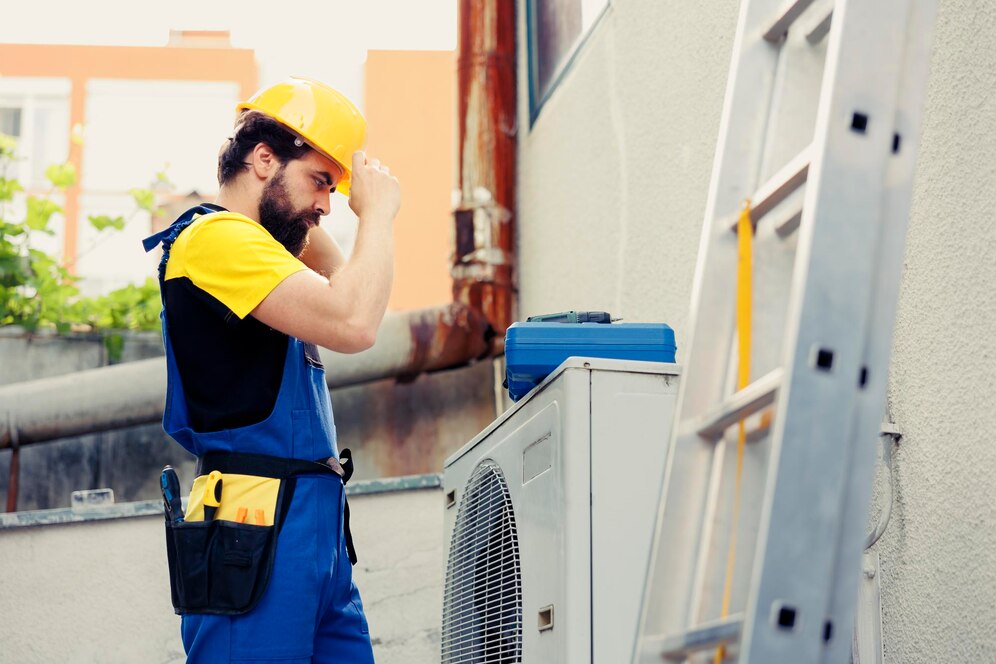For many homeowners, the sight of an air conditioner completely covered in ice during the middle of summer is always a strange one to behold. It’s not so strange once you find out how your air conditioner works to provide your home with the summertime comfort you’ve come to expect. Nevertheless, it’s a frustrating problem that can leave your home without air conditioning right when you need it most.
There are plenty of reasons why your air conditioner could end up trapped in an icy shell. Whether you have a central air conditioning unit, a ductless mini-split system or a window-mounted unit, the causes of ice buildup are largely the same. The following explains how ice buildup happens along with some common signs to look out for and, of course, how to safely get rid of and prevent ice buildup.
Where Ice Buildup Comes From
To understand how ice has the potential to form on your air conditioner, it’s important to understand how air conditioners work. Contrary to popular belief, a typical air conditioner does not make cold air. What it does instead is remove the latent heat contained in the air that passes through the air conditioner. By harvesting this heat and transporting it elsewhere, the air that comes out of the unit is much cooler than when it initially entered the unit.
This all depends on your air conditioner using its refrigerant to take advantage of the Joule-Thomson Effect. Here’s a brief breakdown of how it all works:
- Prior to entering the evaporator coil, an expansion valve removes pressure from the liquid refrigerant, allowing it to expand into a vapor and rapidly cool to near-freezing temperatures.
- Once the vapor comes into contact with your home’s air, the refrigerant absorbs the heat from that passing air. This also causes moisture in the air to condense into a liquid form.
- The now-cool and dry air is directed back into your home’s indoor spaces. Meanwhile, the refrigerant is compressed and run through the condenser coil, where it releases the latent heat to the outside air.
Keep in mind that temperatures along the coil’s surface are hovering close to the freezing point. If there isn’t enough refrigerant in the air conditioner or enough air passing through the coils, coil temperatures could drop below freezing. This causes the surrounding moisture to freeze on the coil, forming those tell-tale layers of frost and ice.
What It Looks Like
It’s not unusual to see a light dusting of frost on your air conditioner’s evaporator coil while it’s running. It’s only when that light dusting grows into a heavy buildup of frost and ice that you can expect to have trouble with your air conditioner.
One of the first things you may notice is that your air conditioner isn’t reaching the point you set on your thermostat. You may even feel warm air coming out of the supply registers. If you can’t feel any air coming out of those registers despite having the air conditioner turned on, that could be another possible sign of ice buildup.
You might also notice your air conditioner starting, stopping and restarting its compressor constantly. This is known as “short cycling” and it’s a serious symptom of ice buildup that could eventually hurt your air conditioner through unnecessary wear and tear.
How to Deal With Ice Buildup
If you notice ice buildup on your air conditioner, the very first thing you should do is turn your air conditioner off and, if possible, turn the fan on. For relatively light ice buildup, this should help unthaw your air conditioner within an hour or two.
If there’s heavy ice buildup, then you’ll need to break out a household hair dryer and open up the access panel to the evaporator coil. Set the hair dryer on its highest setting and go over the frozen coil, making sure not to linger on one spot for too long. If you happen to have a heat gun on hand, you can use this instead of the hair dryer as long as you have it set on a medium setting.
How to Prevent Ice Buildup
Chances are you don’t want a repeat of your ice buildup issue, so you’ll need to take some preventive steps to keep it from becoming an issue again. Here are a few things you and your technician can do to keep ice buildup at bay:
Have a professional check your air conditioner’s refrigerant charge on a regular basis and keep an eye out for any refrigerant leaks.
Make sure your evaporator and condenser coils are free of any dirt, dust or debris that could cause airflow blockages. If you’re not comfortable with cleaning your own coils, you can have a professional take care of it instead.
Change your air filter on a regular basis. A clogged air filter can cause airflow blockages that could eventually lead to ice buildup.
Make sure the return air intake register isn’t being blocked by furniture, drapes or rugs.
Having an HVAC technician on hand is your best bet for dealing with any air conditioning issue, including ice buildup. If you’re in need of any heating or cooling services, you can always schedule an appointment with Doctor Fix It Plumbing, Heating, Cooling and Electric.

















